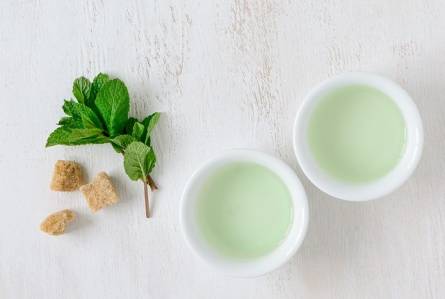Peanut Butter Food Poisoning refers to a form of foodborne sickness that occurs when people consume peanut butter that has been infected with Salmonella bacteria. Salmonella is a prevalent bacteria that can be found in different types of food, including peanut butter.
If contaminated peanut butter is ingested, it can cause gastrointestinal issues like nausea, vomiting, stomach pains, and diarrhea. This particular type of food poisoning can be especially perilous for young kids, elderly individuals, and people with weakened immune systems.
Common Symptoms of Peanut Butter Food Poisoning
- Gastrointestinal Distress:
Gastrointestinal discomfort is a notable indication of food poisoning caused by peanut butter. It is marked by experiencing abdominal pain, cramps, and a sense of uneasiness. Moreover, people may encounter diarrhea and vomiting, usually occurring within a few hours to a few days after consuming contaminated peanut butter. - Nausea and Loss of Appetite:
Peanut butter food poisoning can result in persistent feelings of nausea, often leading to a loss of appetite. This arises due to the body’s natural response to harmful bacteria or toxins present in the contaminated peanut butter. - Fever and Fatigue:
Another common symptom is the onset of fever and fatigue. The body reacts to foodborne pathogens by increasing its temperature to combat the infection. Consequently, feelings of fatigue may also set in as the body diverts energy to fight off the harmful substances. - Headaches and Muscle Aches:
Headaches and muscle aches are frequently experienced by those affected by peanut butter food poisoning. These symptoms can vary in intensity but are generally associated with overall body weakness and discomfort. - Dehydration:
Peanut butter food poisoning can cause dehydration due to repeated episodes of vomiting and diarrhea. It’s essential to replenish fluids and electrolytes to prevent complications related to dehydration, such as dizziness, dry mouth, and a rapid heartbeat. - Allergic Reactions:
Individuals with peanut allergies are particularly susceptible to experiencing severe allergic reactions if they unknowingly consume peanut butter contaminated with other allergens. Symptoms may include hives, swelling of the face or throat, difficulty breathing, and even anaphylaxis. If you have a known peanut allergy, it’s vital to check product labels carefully and seek immediate medical attention if a reaction occurs. - Neurological Symptoms:
Neurological symptoms can occasionally occur as a result of consuming peanut butter that is contaminated with food poisoning. These symptoms may consist of a tingling or numbing sensation in the limbs, challenges with coordinating movements, and a temporary inability to move. If you observe any of these symptoms, it is crucial to promptly seek medical help.
Causes of Salmonella Contamination in Peanut Butter
Salmonella is a type of bacteria that can cause food poisoning, leading to severe illness and even death in vulnerable individuals. To shed light on this issue, here are the five major causes of salmonella contamination in peanut butter.
- Contaminated peanuts: The primary source of salmonella contamination in peanut butter is contaminated peanuts. These peanuts may be grown in soil or water that harbors the bacteria, or they may become contaminated during harvesting, processing, or storage. If a batch of peanuts is infected, it can spread the bacteria to any peanut butter made from them.
- Unsanitary processing facilities: Peanut butter production involves several steps, including shelling, roasting, grinding, and packaging. If the processing facilities are not cleaned and maintained properly, they can become breeding grounds for salmonella. Contaminated equipment, utensils, or surfaces can easily transfer the bacteria to the peanut butter during production.
- Poor employee hygiene: Negligence in maintaining proper hygiene practices by employees can lead to salmonella contamination in peanut butter. If employees fail to wash their hands thoroughly or wear gloves appropriately, they can introduce bacteria into the production process. Additionally, sick employees who handle or process peanuts can inadvertently contaminate the product.
- Cross-contamination during packaging: Salmonella can be introduced into peanut butter through contact with contaminated packaging materials. If the packaging materials are not handled and stored properly, or if they come into contact with unsanitary surfaces or utensils, they can transfer the bacteria to the product. This can occur at any stage of production, from packaging the peanut butter jars to sealing them.
- Inadequate quality control measures: Insufficient quality control measures can contribute to salmonella contamination in peanut butter. If proper testing and inspection protocols are not implemented, contaminated batches may go undetected and be distributed to consumers. Regular monitoring and rigorous testing throughout the production process are important to identify and eliminate any potential sources of contamination.
Dangers and Risks of Consuming Salmonella-contaminated Peanut Butter
Salmonella-contaminated peanut butter poses serious health risks and safety concerns. Consuming this contaminated product can lead to various dangers which should not be taken lightly. Here are some of the risks associated with consuming salmonella-contaminated peanut butter:
- Food poisoning: Salmonella is a bacteria that causes food poisoning. Symptoms can include diarrhea, abdominal cramps, fever, and vomiting. In severe cases, it can even lead to hospitalization or, in rare cases, death.
- Spread of infection: Salmonella is highly contagious and can spread easily. If contaminated peanut butter comes into contact with other food items or surfaces, the bacteria can transfer and infect the surrounding area. This increases the risk of cross-contamination and further spread of the infection.
- Compromised immune system: Individuals with weaker immune systems, such as the elderly, pregnant women, infants, and those with certain medical conditions, are more susceptible to salmonella infections. Consuming contaminated peanut butter can be particularly dangerous for these vulnerable groups.
- Long-term health complications: In some cases, a salmonella infection can lead to long-term health complications. These may include chronic joint pain, irritable bowel syndrome (IBS), and post-infectious reactive arthritis. These conditions can significantly impact a person’s quality of life and require ongoing medical treatment.
- Recalls and legal consequences: When a salmonella contamination is identified in peanut butter or any other food product, it often results in a product recall by the manufacturer. These recalls can be costly and damaging to the brand’s reputation. Moreover, legal consequences may follow if negligence is proven on the part of the manufacturer in preventing the contamination.
To minimize the risks associated with salmonella-contaminated peanut butter, it is important to take precautions:
- Stay informed: Stay updated on the latest food recalls and advisories issued by health authorities. Follow their guidelines to ensure your safety and protect your health.
- Proper storage: Keep your peanut butter in a cool, dry place to prevent bacterial growth. Following the instructions on the product’s packaging can help you ensure proper storage practices.
- Practice good hygiene: Wash your hands thoroughly before and after handling any food products, including peanut butter. This reduces the risk of contamination and spread of infection.
- Check expiration dates: Always check the expiration dates of the products you purchase. Avoid consuming peanut butter or any food item that has expired.
Being aware of the dangers and risks associated with consuming salmonella-contaminated peanut butter is essential for protecting your health and the well-being of your loved ones.
Safe Handling and Storage of Peanut Butter
To ensure the safety of peanut butter and minimize the risk of Salmonella contamination, it is essential to follow safe handling and storage practices. Here are some tips to consider:
- Check for the expiration date: Always purchase peanut butter that has a long shelf life and is within its expiration date.
- Store in a cool, dry place: Keep your peanut butter in a cool cupboard away from direct sunlight and moisture. This will help prevent bacterial growth.
- Avoid cross-contamination: Use a clean, dry utensil each time you scoop out peanut butter. Do not mix different types of peanut butter in the same jar.
- Refrigerate after opening: If you prefer natural or homemade peanut butter, it is advisable to store it in the refrigerator after opening to prolong its shelf life and reduce the risk of contamination.
- Discard if unsure: If you suspect that your peanut butter is contaminated or have doubts about its safety, it is better to discard it rather than risk food poisoning.
By following these safe handling and storage practices, you can enjoy your peanut butter without compromising your health. Stay vigilant and prioritize food safety.
Tips for Avoiding Salmonella Contamination in Peanut Butter
To prevent Salmonella contamination in peanut butter and stay safe, there are several precautions you can take:
- Purchase from reputable sources: Buy peanut butter from reliable brands or stores that have a good reputation for food safety.
- Check for recalls: Stay informed about any recalls or warnings related to peanut butter products. Check the manufacturer’s website or subscribe to recall alerts.
- Properly store and handle: Store peanut butter in a cool, dry place away from direct sunlight and moisture. Keep the lid tightly closed when not in use. Use clean utensils to scoop out the peanut butter to avoid cross-contamination.
- Wash hands before handling: Always wash your hands thoroughly with soap and water before handling peanut butter or any other food products.
By adhering to these straightforward instructions, you can decrease the chances of Salmonella contamination in peanut butter and consume it without any safety concerns.
Treatment Options for Peanut Butter Food Poisoning
Exposure to Salmonella-contaminated peanut butter can result in various symptoms such as diarrhoea, vomiting, and abdominal cramps. In majority of instances, the infection tends to subside naturally without any specific medical intervention.
Nevertheless, it is crucial to maintain proper hydration levels by consuming abundant liquid to replenish the fluids that are expelled through diarrhea and vomiting. In instances of severe conditions or for individuals with compromised immune systems, seeking medical assistance may be essential.
Antibiotics may be prescribed to fight the infection and alleviate symptoms. It is crucial to consult a healthcare professional if symptoms worsen or persist for more than a few days.
Conclusion
Peanut butter that is contaminated with Salmonella can lead to severe health consequences. To reduce the chances of contamination, it is crucial to handle and store peanut butter correctly. Taking precautions such as washing hands, utilizing clean utensils, and storing it at an optimal temperature can effectively prevent bacterial growth.









